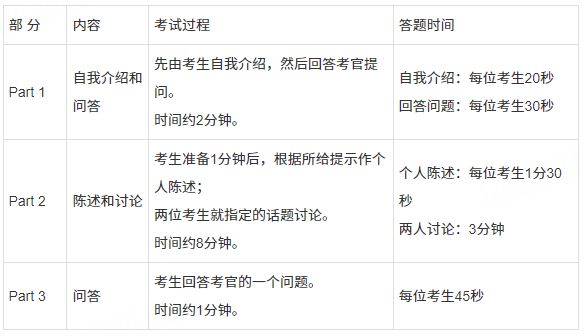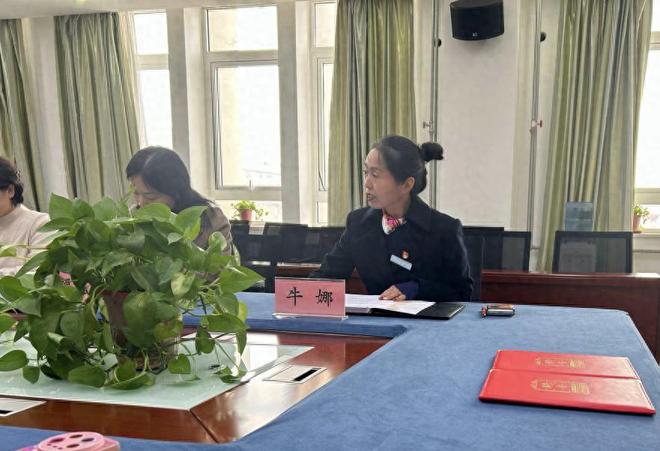

我们可以看出来:英语中用Chinese characters表“汉字”。
【英语】Chinese[‚tʃaɪ'niːz]n. 中文, 中国话adj. 中国的, 中国话的
拆解:chin+ese。
这里的chin实际上原来对应汉语拼音的qin,也就是汉字“秦”的读音。
只是由英语历史上经历了著名的“Great Vowel Shift(元音大推移)”,导致元音用汉语常识轻松同步学习英语和拉丁语,特别是长元音的读音发生了较大的变化。
在古英语中,i的读音和拉丁语、汉语拼音的i的读音基本上是一样的。
而在现代英语中,i的字母音(相当于长元音)变化为读[aɪ]。
在西班牙语中,表“中国”的单词China拼写和英语是一样的。
西班牙语的Chi和汉语中的“气qì”相当接近,而na和汉语中的“拿ná”相当接近。
也就是说,西班牙语中表“中国”的单词China和汉语中的“气拿”读音非常接近。
请家长朋友和孩子一起利用百度翻译分别听听英语和西班牙语中的China的读音。
最重要的区别在:英语中元音字母在重读开音节通常读其字母音,所以,China中的元音字母i读其字母音[aɪ],对应德语的ai,ei,汉语拼音的ai。
另外,英语中的元音字母在非重读音节,通常读[ə]。
所以,英语单词China中的na的读音接近汉语中当助词的“呢 ne”。
【英语】China[tʃaɪnə]n. 中国
拆解:chin+a(拉丁语表“阴性单数”后缀)。
由于百度翻译中没有拉丁语、意大利语发音,我们可以利用西班牙语发音大概了解拉丁语发音。
事实上,西班牙人就是利用西班牙语发音方式读拉丁语。
也就是说,您可以学习西班牙语式拉丁语发音。
在网上可以找到名叫《拉丁语发音教程》的教学视频,可以学习古典式、意大利语式和德语式拉丁语发音。
如果不是为了参加国际交流,我们可以直接用汉语拼音读拉丁语,这就是汉语式拉丁语发音。
这就是说,中国孩子学习拉丁语根本就没有什么发音问题。
【英语】character[ˈkærɪktə(r)]n.1. 字
The characters in Chinese writing look like small pictures.
汉字看起来象是一幅幅小图画。
a Chinese character一个汉字
2. 个性;特色;(事物的)特性
He has a strong but gentle character.
他有坚强但温柔的性格。
The new buildings have changed the character of the village.
新建筑改变了这个村庄的特点。
3. 正直;骨气;守正不阿
4. 人
5. (书、剧中的)人物
I find all the characters in his new play very real.
我觉得他那出新戏中所有的人物都很真实。
6. 怪人;滑稽的人物
7. 〈计〉字符
拆解:char+ac+ter。
可以先熟悉英语单词chart(图表)和act(行为),然后再记忆char-和ac-。
把char-和ac-组合起来再加上后缀-ter就是character。
请家长朋友牢记:英语中希腊语源单词中的ch通常读汉语拼音的k性格与英语学习,也就是事实上保留了古典拉丁语中ch,古希腊语的χ的读音。
请家长朋友大概了解一下词源:
character (n.)
Origin and meaning of character
mid-14c., carecter, "symbol marked or branded on the body;" mid-15c., "symbol or drawing used in sorcery;" late 15c., "alphabetic letter, graphic symbol standing for a sound or syllable;" from Old French caratere "feature, character" (13c., Modern French caractère), from Latin character, from Greek kharaktēr "engraved mark," also "symbol or imprint on the soul," properly "instrument for marking," from kharassein "to engrave," from kharax "pointed stake," a word of uncertain etymology which Beekes considers "most probably Pre-Greek." In English the Latin ch- spelling was restored from 1500s.
只要您愿意,就可以顺便掌握希腊语的相应单词。
【希腊语】χαρακτήρας n. carver, character, nature
拆解:χαρ(char)+ακ(ac)+τήρ(ter)+ας(as)。
请注意:拉丁语极少用k,德语很少用c。
古典拉丁语中,c总是读[k],对应汉语拼音的g,希腊语中的κ,所以,古典拉丁语用ac改写希腊语的ακ。
前面,我们介绍了:英语中希腊语源单词的ch通常读汉语拼音的k。
古典拉丁语用ph、th、ch改写希腊语的φ、θ、χ,对应汉语拼音的p、t、k。
强烈建议顺便熟悉英语单词chemist(化学家),chemistry(化学),alchemy(炼金术),Christ(基督),Christmas(圣诞节)。
这些单词都源自希腊语,所以,其中的ch都读汉语拼音的k。
我们大概学习:
【英语】Chinese characters are written in a shape of square, therefore they are known as square-shaped characters.
【汉语】汉语的字形是方的,所以又称为“方块字”。
英语的“a shape of square”意思是“一个方形的”。
【英语】square[skwer /skweə]n. 正方形; 方块; 方形物; 广场
拆解:s+quare。
英语中源自拉丁语中的qu通常读[kw],源自法语的qu读[k]。
词源:square (n.)
mid-13c., "tool for measuring right angles, carpenter's square," from Old French esquire "a square, squareness," from Vulgar Latin *exquadra, back-formation from *exquadrare "to square," from Latin ex "out" (see ex-) + quadrare "make square, set in order, complete," from quadrus "a square" (from PIE root *kwetwer- "four").
我们可以大概了解:square是经由古法语源自拉丁语,其中的s-对应拉丁语前缀ex-表“外,离开,前任”等,而quare-对应拉丁语的quadrare。
【拉丁语】quadro:quadro, quadrare, quadravi, quadratus v. square up, make square/suitable; square/fit; quadruple; form rectangular shape;
拆解:quadr+o。
建议先熟悉qua再记忆quadr-。
【拉丁语】qua adv. where; by which route;
认识英语单词translate(翻译)的小朋友可以顺便熟悉quadrilateral。
【英语】quadrilateral[‚kwɑdrɪ'lætərəl /‚kwɒdrɪ'lætərəl]n. 四边形adj. 四边形的
拆解:quadri(表“四”)+lateral(表“边”)。
词源:quadrilateral (n.)
"figure formed of four straight lines," 1640s, with -al (1) + Latin quadrilaterus, from quadri- "four" (from PIE root *kwetwer- "four") + latus (genitive lateris) "the side, flank of humans or animals, lateral surface," a word of uncertain origin. As an adjective, "four-sided, composed of four lines," from 1650s. Related: Quadrilaterally.
【英语】lateral[l 'lætərəl]n. 侧部; 边音; 支线adj. 侧面的, 旁边的
拆解:la+ter+al。
如果您还能读得:bi-(=di-)表“二”,multi-=poly-表“多”,就已经实际上掌握英语单词bilateral(双边的)。
【英语】bilateral[baɪˈlætərəl]adj. 两边的;双方的
a bilateral agreement双边协定
拆解:bi+lateral。
【英语】multilateral[ˈmʌltiˈlætərəl]adj.1. 多边的2. 多国参加的
a multilateral treaty多边条约
a multilateral agreement多边协定
【英语】quadratic[kwəˈdrætik]adj.1. 【数】二次的2. 方形的n.1. 【数】二次方程式; 二次项2. [quadratics]【数】二次方程式论
quadratic equation二次方程式
拆解:quadr+a+tic。
所以,英语用“square-shaped character”表“方块字”就没有什么悬念了。
我们再学习一下:
【英语】Each character consists of various strokes formed by different dots or lines as the basic components.
【汉语】汉字是由不同的笔画组成的,笔画是组成方块汉字字形的各种形状的点和线,它是汉字形体的最小单位。
英语的consist of 表“由……组成”。

【英语】consist[kən'sɪst]v. 组成, 构成; 一致, 符合; 在于, 存在于
拆解:con+sist。
请家长朋友牢记:源自拉丁语的con-=com-=col-=cor-=co-,对应源自希腊语的syn-=sym-=syl-=sy-,对应英语的with,表“在一起”。
com-是con-在b、p、m前的变化,看到com-就基本上可以判断出它后面接的是b、p、m。只有极少例外。
【英语】component[kəmˈpəunənt]adj.组成的, 合成的, 成分的, 分量的
Blade and handle are the component parts of a knife.
刀身和刀柄是一把刀的组成部分。
n.部分; 成分, 组分[元]; 分力, 分向量; 支量, 支命题; 元件, 组[部]件
component of force【物】分力
components of cost(各种)生产费用 componental
拆解:com+pon+ent。
词源:component (n.)
1640s, "constituent part or element" (earlier "one of a group of persons," 1560s), from Latin componentem (nominative componens), present participle of componere "to put together, to collect a whole from several parts," from com "with, together" (see com-) + ponere "to place" (see position (n.)). Related: Componential.
如果您愿意,就可以在认识pon-的基础上顺便掌握拉丁语动词ponere。
【拉丁语】pono:pono, ponere, posui, positus v. put/place/set; station/post (troops); pitch (camp); situate; set up; erect;
拆解:pon+o(表“第一人称单数”尾缀)。
拉丁语的pono相当于英语的I put;ponere相当于to put。
细心的小朋友可以看出来:拉丁语动词ponere的过去分词是positus。所以,就可以轻松掌握英语单词posit(安置、放置)和position(位置)。
强烈建议在认识前缀pre-和com-的基础上顺便熟悉英语单词preposition(介词——前置词),composition(写作,作曲)。
下面,我们再继续学习《任何年龄的人都可以轻松自学拉丁语》中的第33课。


到这里,我们已经学习了拉丁语不规则esse和规则动词spectare的现在时变化,也就是现在式(present tense)。
我们重点复习一下拉丁语的esse的现在时变化:
第一人称单数现在式:sum,其中的s-是词根es-的零级形式性格与英语学习,也就是元音e脱落了,-m是表“第一人称单数”的尾缀。
第二人称单数现在式:es,-s是表“第二人称单数”尾缀。
第三人称单数现在式:est,其中的es-是词根性格与英语学习,-t是表“第三人称单数”尾缀。
上面,是3种单数主语时的变化。
下面,是3种复数主语时的变化。
第一人称复数:sumus,其中的-mus是表“第一人称复数”尾缀。
第二人称复数:estis,其中的-tis是表“第二人称复数”尾缀。
第三人称复数:sunt,其中的-nt是表“第三人称单数”尾缀。
只要重点学习熟悉esse的变化,其它的规则动词的变化就非常简单了。
所以说性格与英语学习,拉丁语的动词变化并不复杂。
如果家长朋友大概了解一些拉丁语常识,孩子学习英语、德语、法语、意大利语、西班牙语都肯定是事半功倍。
英语中,最复杂的动词是be,只要认真掌握它的变化,其它动词的变化也就非常简单了。
所以说,拉丁语、英语等印欧语系语言的动词变化真的不复杂。
只要家长朋友帮助孩子通过了解词源记单词,他们很快就会爱上阅读英语原版教材。
强烈建议家长朋友和孩子一起利用英语原版的生物、化学教材开始轻松有趣的英语入门学习。
前面,我们已经学习了化学元素周期表前18位的元素英语名称和电子结构。
请一定要经常复习:

建议家长朋友帮助孩子至少牢记:hydrogen(氢),oxygen(氧)和carbon(碳)。

前面,我们很多次建议大家牢记:英语、法语、德语中的ph都读[f]。
英语至少有4731个单词用到ph,基本上都源自希腊语。
【英语】sphere[sfiə]n.1. 球, 球形, 球体, 球面2. 天体, 行星体3. 地球仪, 天体仪4. (活动)范围, (研究)领域5. 身分, 地位, (社交或势力)范围6. [美俚]棒球7. [诗]天空
geometry of sphere球面几何
sphere of knowledge知识面
the ideological sphere意识形态领域
a sphere of influence势力[影响, 作用]范围
The earth, sun, and moon are spheres.地球, 太阳和月亮都是天体。
We move in different spheres.我们在不同的领域里活动。
词源:sphere (n.)
mid-15c., Latinized spelling of Middle English spere (c. 1300) "cosmos; space, conceived as a hollow globe about the world," from Anglo-French espiere, Old French espere (13c., Modern French sphère), from Latin sphaera "globe, ball, celestial sphere" (Medieval Latin spera), from Greek sphaira "globe, ball, playing ball, terrestrial globe," a word of unknown origin.
前面,我们也多次请大家牢记:源自拉丁语的semi-对应源自希腊语的hemi-表“半”。
这样,就已经实际上掌握英语单词hemisphere。
【英语】hemisphere[ˈhemɪsfɪə(r)]n.1. 半球体,半个球
If you cut a round fruit into two, each half is a hemisphere.
如果你把一个圆的水果切成两半,每一半就是一个半球。
2. (地球或天体的)半球
The Northern Hemisphere is the part of the world north of the equator, and the Southern Hemisphere is south of the equator.
北半球是地球赤道以北的部分,南半球是赤道以南的部分。
拆解:hemi+sphere。
下面,再学习atmosphere就非常简单了。
【英语】atmosphere[ˈætməsfiə]n.1. 大气(层), 气圈; 空气2. 周围情况, 环境, 气氛3. (艺术品的)基调; 风格4. 气压5. 【化】雾6. 【动】瞳点外圈7. 工程大气压8. 炉气
atmosphere pressure大气压力
the somber atmosphere阴沉忧郁的气氛
We live in an atmosphere of freedom.我们生活在自由的环境中。
拆解:atmo+sphere。
词源:atmosphere (n.)
1630s, atmosphaera (modern form from 1670s), "gaseous envelop surrounding the earth," from Modern Latin atmosphaera, from Greek atmos "vapor, steam" (see atmo-) + sphaira "sphere" (see sphere). In old science, "vaporous air," which was considered a part of the earth and a contamination of the lower part of the air (n.1).
请大概了解:atmo-源自希腊语的ατμός(atmos)。其中的-mos是名词后缀。
【希腊语】ατμός n. fume, steam, vapor, vapour [Brit.]
【英语】carbonic acid n. 碳酸
【英语】bicarbonate ion 碳酸氢盐离子
【英语】bicarbonate[baiˈkɑːbənit]n.【化】碳酸氢盐, 重碳酸盐
bicarbonate of soda碳酸氢钠, 小苏打
拆解:bi+carbon+ate.
【英语】calcification[‚kælsɪfɪ'keɪʃn]n. 石灰化; 钙化物质; 钙化
拆解:calc+i+fic+a+tion。
【英语】calcify['kælsɪfaɪ]v. 使成石灰; 使钙化; 变成石灰质; 钙化
拆解;calc+i+fy。
请顺便熟悉英语单词calcium(钙),calculus(微积分,结石)。
英语至少有222个单词以-fy结尾,其中有很多是动词。
非常好玩的是:汉语中通常把英语用到-fy(源自古法语的-fier,源自拉丁语-ficare)的动词翻译成“~化”。如purify(净化),aerify(气化),alkalify(碱化)。
【英语】alkalify[ˈælkəlifai]vt. 使成碱性; 加碱vi. 变成碱性
拆解:al+kali+fy。
【英语】alkali['ælkəlaɪ]n. 碱; 碱金属; 强碱; 可溶性无机盐
拆解:al+kali。
词源:alkali (n.)
late 14c., "soda ash," from Medieval Latin alkali, from Arabic al-qaliy "the ashes, burnt ashes" (of saltwort, which abounds in soda due to growing in alkaline soils), from qala "to roast in a pan." Later extended to similar substances, natural or manufactured. The modern chemistry sense is from 1813.

【英语】alkali metals 碱金属
未经允许不得转载:阿卡索学习网 - 英语学习培训机构网站! > 用汉语常识轻松同步学习英语和拉丁语
 网络外教一对一知乎 字节跳动:从大到巨大,要翻越巨头的大山
网络外教一对一知乎 字节跳动:从大到巨大,要翻越巨头的大山 德语外教一对一广州 三、80年代那些令人难忘的第1次----封存了38年的西柏林留学经历
德语外教一对一广州 三、80年代那些令人难忘的第1次----封存了38年的西柏林留学经历 梅州客家足球俱乐部代表中国参加2019世界沙滩足球俱乐部杯比赛
梅州客家足球俱乐部代表中国参加2019世界沙滩足球俱乐部杯比赛 中国东北小哥娶了澳洲白富美,回老家办婚礼,全村上千人围观
中国东北小哥娶了澳洲白富美,回老家办婚礼,全村上千人围观















热门信息
阅读 (2353)
1 张雪峰直言:这三个大学专业“失宠”,就业率低,报考需谨慎阅读 (2068)
2 适合高中英语学习的25部英文电影,太好看了,你看过几部?阅读 (2009)
3 old man不是“老人”的意思,下次别翻译错了阅读 (1777)
4 全国小学生英语能力测试(NEPTP)申请指南【文末有福利】阅读 (1151)
5 英语一对一用什么教材?哪个是最好的?